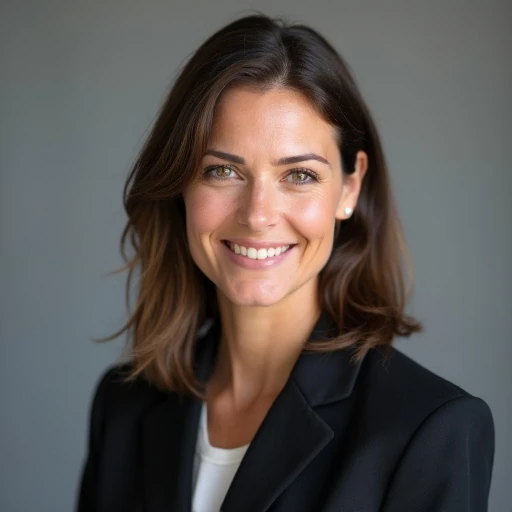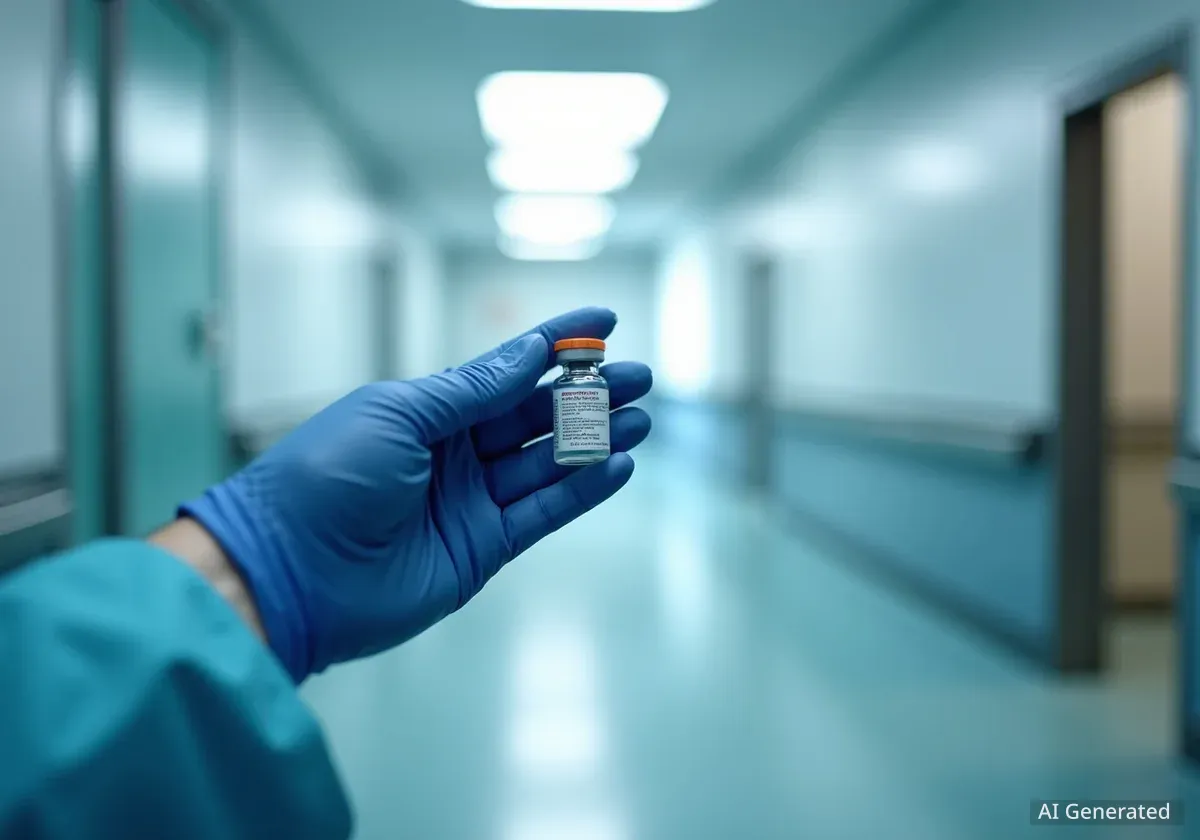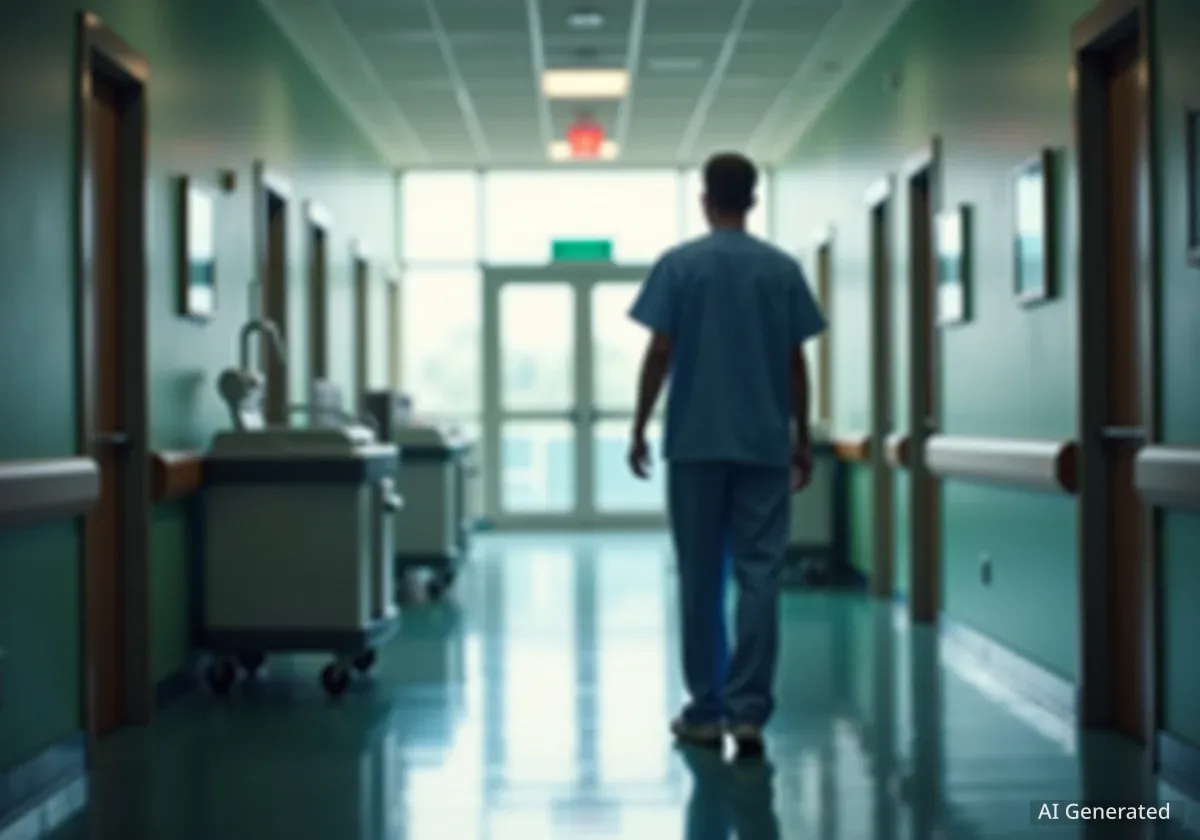A University of Liverpool medical student is leading a local branch of a national charity after her father, who received a life-saving transplant, experienced a relapse of a rare blood cancer. Sophie Hutchings is now president of Liverpool Marrow, the student group for the charity Anthony Nolan, which facilitated her father's treatment.
Her father, Tim Hutchings, was first diagnosed with multiple myeloma in January 2016 at the age of 53. After a successful donor cell transplant and seven years of remission, the family received news in January 2024 that the cancer had returned. This has renewed Sophie's commitment to recruiting stem cell donors who can offer a second chance at life to others.
Key Takeaways
- Tim Hutchings was diagnosed with multiple myeloma, a rare blood cancer, at age 53.
- He received a life-saving donor cell transplant through a clinical trial with the charity Anthony Nolan.
- After seven years in full remission, the cancer returned in January 2024.
- His daughter, Sophie, a University of Liverpool medical student, is now president of Liverpool Marrow, Anthony Nolan’s student volunteer group.
- The family's experience highlights the critical need for young, healthy stem cell donors.
A Shock Diagnosis at a Young Age
For the Hutchings family, life was normal until Tim began experiencing persistent hip pain. Sophie, who was just 12 at the time, recalls the initial assumption that it was simply age-related. "We thought it would be fine, nothing to worry about," she explained.
However, after six months of visits to orthopaedic specialists with no clear answers, an MRI scan led to urgent appointments with haematologists. In January 2016, Tim, then 53, received the diagnosis of multiple myeloma. This type of blood cancer is more commonly diagnosed in people in their seventies, making his case unusual and particularly shocking for his family.
Sophie described the impact of the news. "He has always been a keen mountain biker, he was fit and healthy, working, life was normal," she said. "And me and my brother were so young, he was 14, so it was a lot for us to take in at that age although my parents definitely sheltered us from the really hard parts."
A Clinical Trial Offers Hope
Tim began chemotherapy immediately following his diagnosis. Due to his relatively young age, he was invited to participate in a clinical trial managed by Anthony Nolan, a UK charity focused on leukaemia and stem cell transplantation. The trial offered a chance for a donor cell transplant, a procedure with significant risks but also the potential for a cure.
The family was faced with a difficult decision. The mortality rate for the transplant was between 25% and 50%. Sophie later learned of these stark figures, noting, "Hearing those figures were really shocking, but I didn't find this out until I was older."
"From my dad's point of view he could have chemotherapy and maybe never get the cancer in remission. But, this trial was designed to give him a second chance, a chance to get the cancer into remission and live a normal life again."
The family chose the transplant. For Sophie, this meant a new routine. "I just remember it meant we were going to the hospital every day after school," she recalled. Tim underwent the transplant in April 2018 and remained in the hospital for approximately three months.
What is Multiple Myeloma?
Multiple myeloma is a type of blood cancer that develops from plasma cells in the bone marrow. These cancerous cells multiply, crowding out healthy blood cells and producing abnormal proteins that can cause complications affecting the bones, immune system, and kidneys. It is considered a rare cancer, particularly in individuals under 60.
Seven Years of Remission and Cherished Milestones
The high-risk procedure was a success. The transplant sent the cancer into full remission, granting Tim and his family seven years of normalcy. During this period, he was able to witness significant life events that once seemed uncertain.
He saw his son, Callum, now 23, join the Navy and become an air engineer. He also celebrated his daughter Sophie's acceptance into medical school at the University of Liverpool, a career path she chose partly due to her father's experience.
Sophie shared her motivation: "When everything happened to dad I saw what doctors could do for people's lives and it made my mind up that I wanted to work with medicine. My dad was so proud of me when I got into medical school."
Tim resumed his active lifestyle, enjoying social events, paragliding, and even marrying his wife, Jo. Sophie reflected, "He became himself again and it was so nice... which we never thought he would be able to do seven years ago."
An Uncertain Future and Renewed Purpose
In January 2024, the family's relief was interrupted when a routine blood test confirmed that Tim's cancer had returned. He immediately restarted treatment and is currently receiving donor lymphocyte infusions. His condition is described as stable, but the long-term outlook is unclear.
"It's difficult to tell what will happen with the type of cancer he has," Sophie admitted. "Nobody expects anyone to live that long with this cancer, it's a bit of trial and error. It's scary but we always look for the positives."
The Role of Anthony Nolan
Anthony Nolan is a UK charity that saves the lives of people with blood cancer. It maintains a register of potential stem cell donors, conducts research, and provides support to patients and families. Student groups like Liverpool Marrow are vital for recruiting young donors, as they are most likely to be chosen to donate and provide the best outcomes for patients.
This personal connection to the charity's work inspired Sophie's involvement at university. During her first week in Liverpool, she encountered the Liverpool Marrow stall at the freshers' fair. "I felt like I couldn't just walk past it or not say anything because the charity had had such an impact on my family's lives," she said.
She began as a volunteer, later joining the committee, and has now taken on the role of president. Her mission is clear: to recruit as many young, healthy individuals as possible to the stem cell register. "The group's work is so important because it's aimed at recruiting young healthy donors for stem health and it could save lives," she emphasized.





